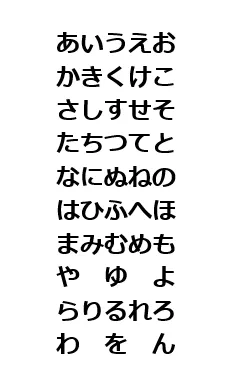December 11, 2023
Unlocking the Mystery of Japanese Writing Systems
Unraveling the mysteries of Hiragana and Katakana: A guide to the intricate writing systems of the Japanese language
Unraveling the Mysteries of Japanese Writing Systems: A Guide to Hiragana and Katakana Discover the beauty and complexities of the Japanese writing system in this comprehensive blog post. Learn about the two syllabic scripts, Hiragana and Katakana, and their different uses in representing native and borrowed words. Delve into the world of Japanese language and unlock the secrets of its intricate characters. Start your journey now!
If youve ever been intrigued by the graceful strokes and intricate characters of the Japanese language, youre not alone. The Japanese writing system is a fascinating blend of characters and scripts that has evolved over centuries. In this blog post, well dive deep into the world of Japanese writing systems and unravel their complexities. So, lets get started!
The Basics: Hiragana and Katakana
In Japanese, there are two syllabic writing systems known as Hiragana and Katakana. These scripts consist of 46 characters each and are used to represent native Japanese words, sounds borrowed from other languages, and grammatical markers. Hiragana is used more frequently in everyday writing and is typically the first script learned by Japanese learners. On the other hand, Katakana is used for foreign loanwords, onomatopoeic words, and emphasis.
Character Complexity: Kanji
While Hiragana and Katakana are essential, they alone cannot fully capture the richness of the Japanese language. Enter Kanji, the complex characters adapted from Chinese. Kanji are logographic symbols that represent words or ideas rather than sounds. Learning Kanji is a lifelong journey, as they come in thousands of different forms, and a good grasp of them is crucial for reading newspapers, books, and official documents in Japan.
Balance and Harmony: Furigana
Given the complexity of Kanji and the different reading possibilities they offer, Furigana was developed to aid pronunciation. Furigana are small characters written alongside Kanji, providing the phonetic reading of the Kanji. They are commonly seen in childrens books, Manga, and materials for Japanese learners to assist in understanding and learning new vocabulary and Kanji.
Putting it all Together: Mixed Script
In modern Japanese writing, all three scripts—Hiragana, Katakana, and Kanji—are used together. This combination is referred to as Mixed Script and provides the necessary balance between readability and efficiency. Kanji convey the core meaning, while Hiragana and Katakana provide grammatical endings, verb conjugations, and handle words that have no Kanji representation. Mastering the blend of these scripts is the key to becoming proficient in Japanese reading and writing.
Conclusion
So there you have it! The Japanese writing system is a beautiful tapestry of scripts, characters, and meanings. Understanding and utilizing Hiragana, Katakana, Kanji, and Furigana is essential for anyone seeking to immerse themselves in the rich world of the Japanese language. Take up the challenge, embrace the elegance, and embark on your journey to become a skilled navigator of the written Japanese word!



